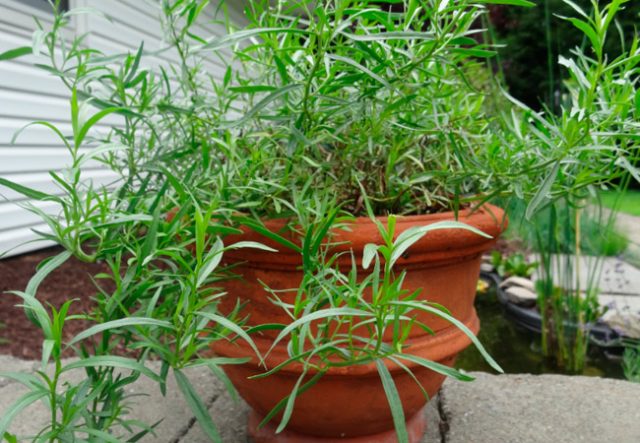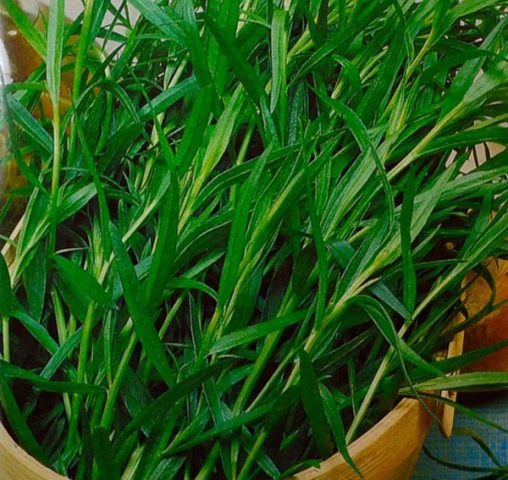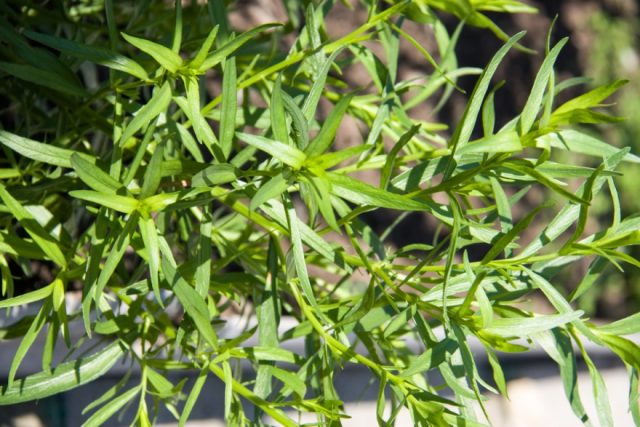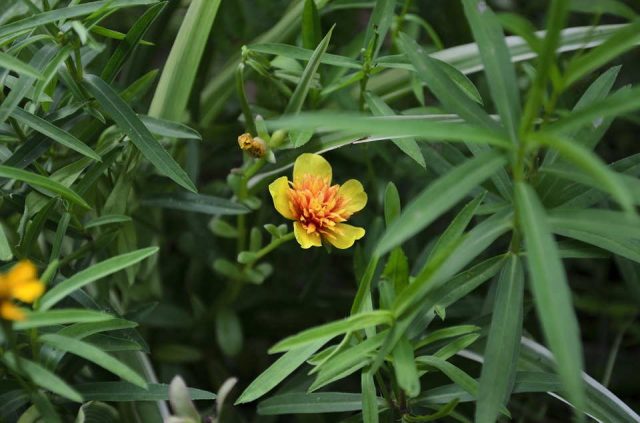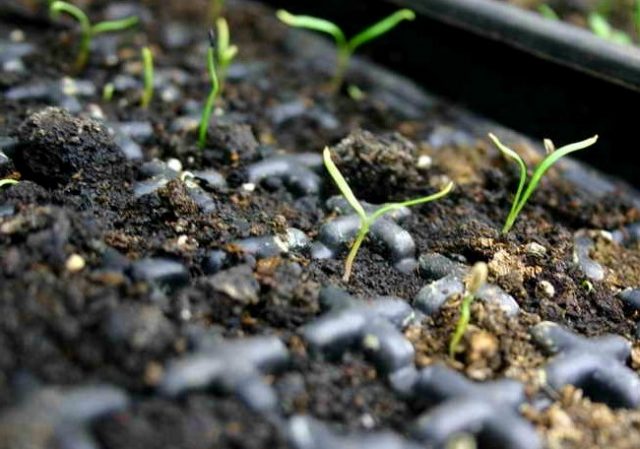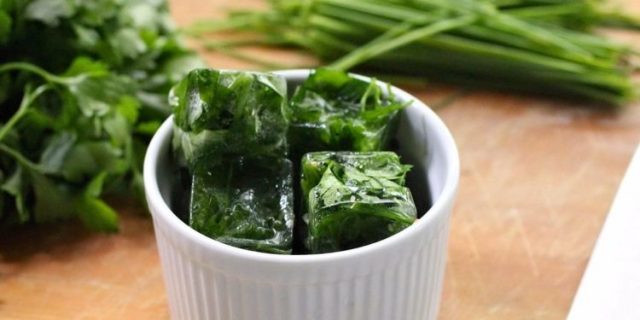Content
When the word “tarragon” is used, many people automatically imagine a refreshing drink of bright green color with a specific taste. However, not everyone knows about the properties of a perennial aromatic plant to which the drink owes its name. Also known as tarragon, this unusual herb has been used with success in cooking and medicine. Therefore, the cultivation and care of tarragon in the open field is today of genuine interest, plant breeders are happy to breed it in their private plots.
How to choose the right variety
Tarragon includes many subspecies, each of which has its own unique characteristics. Among them, the most popular are the following varieties:
- Goodwin... This tarragon variety is suitable for both potted cultivation and outdoor cultivation. Yields a harvest for the 2nd year. It is characterized by a rich spicy bitter taste.
- Gribovsky... A very frost-resistant plant, practically not susceptible to disease, which is why it has gained wide popularity. Able to grow in one place without losing taste for 15 years in a row. The crop appears by the second year of cultivation.
- French... This variety of tarragon is also cold resistant. It has an aesthetic appearance, therefore it is often used in landscape design, but is not suitable for growing from seeds in the northern regions.
- Mexican aztec... In appearance, this plant resembles a bush up to 1.5 m in height. It tolerates elevated temperatures better than other varieties. It grows on one site for 7 years in a row. Has a bright aniseed aroma.
- Dobrynya... In comparison with other varieties of tarragon, it contains a number of useful substances, including essential oil. It tolerates cold and drought well, hibernates without problems. The period of cultivation in the same place is up to 10 years.
Regardless of the variety, all tarragon subspecies can be used for food and have medicinal properties. In addition, any of the above tarragon varieties can be grown at home.
How to grow tarragon at home
The simplicity of tarragon and its compact rhizomes make it possible to grow it even in a small pot or container. At the same time, the process of growing tarragon itself is not laborious.
Any well-lit windowsill is suitable for growing. Tarragon will feel especially comfortable on the south side of the house.
Since tarragon does not like too wet soil, high-quality drainage should be placed on the bottom of the container, for example, vermiculite or perlite. The pot itself should be of medium size, since at home the tarragon grows from 30 to 60 cm. The soil for growing the plant can be prepared from a mixture of sand, turf and humus in equal proportions.
Having prepared the soil for growing, you can start sowing tarragon seeds. They are placed 1 cm deep into the soil and then sprinkled with earth.An impromptu greenhouse is a good option for successfully growing tarragon from seed. To do this, plant seedlings are covered with glass or film and regularly moisten the soil from a spray bottle, while maintaining the temperature at 18 - 20 oC. The first shoots appear at 3-4 weeks.
Further care for tarragon, as in the case of growing in the open field, is reduced to periodic watering and weeding of plants. From the 2nd year, you can annually feed the plant with mineral fertilizers.
Planting and caring for tarragon outdoors
Tarragon is a rather unpretentious herb, and therefore the cultivation of tarragon, in particular, planting and caring for it, does not require much effort. However, in order for the plant to please with a bountiful harvest and less often to hurt, it is worth studying the recommendations for growing it in the open field.
Where to plant tarragon
To grow tarragon in your own dacha, you should take a responsible approach to choosing a planting site. The best choice for growing tarragon is an unshaded area with ample sunlight. Despite the fact that tarragon is undemanding to the quality of the soil and can grow almost everywhere, you should give preference to soils with a neutral or high acidity - from 6 to 7 pH. Tarragon does not take root very well in heavy clay soils. Particular attention should be paid to the nitrogen level in the soil. Too high a content of nitrogenous compounds can provoke the appearance of rust or other diseases in the plant.
Having found a suitable site for growing, it is necessary to clear it of weeds, in particular, from wheatgrass, since tarragon cannot grow with it in the same territory. In the fall, it is required to carry out a deep digging of the site in advance, if necessary, introducing organic fertilizers into the soil. In the spring, just before planting the soil, it is enough to loosen the soil.
How to plant tarragon seeds
Sowing tarragon seeds in the ground begins, as a rule, in April-May. It is best to do this in a greenhouse and plant the seedlings in a permanent place after they have matured. Before that, in the fall, organic and mineral fertilizing is introduced into the soil for plowing. Immediately before sowing, the growing area is covered with a soil mixture of humus, peat and light loamy soil in a ratio of 1: 1: 1. A distance of at least 20 cm is left between the beds.
The planting of tarragon itself is carried out according to a scheme similar to growing it at home:
- Tarragon seeds are sown into the ground no deeper than 1 cm, sprinkled with earth.
- Before the seedlings germinate, the soil should be kept slightly moist, and the temperature in the greenhouse is slightly higher than room temperature - about 20 oC.
- Seedlings need to be provided with a good ventilation regime.
With the right approach, tarragon shoots will germinate by the 3rd week. After another 10 - 14 days, the already developed young plants must be thinned out and moved to a permanent site.
How to grow tarragon outdoors
Being an undemanding plant, tarragon is ideal for cultivation in summer cottages for those who want to gain experience in plant growing.
Tarragon does not need a lot of moisture, even in dry weather. It is enough to water the plant once every 2 to 3 weeks; in rainy periods, you can increase the intervals between waterings.
From the spring of the 2nd year of cultivation, one should feed tarragon with mineral fertilizers once - after the first weeding or before the beginning of flowering time.For these purposes, a mineral mixture of 20 g of ammonium sulfate, 20 g of potassium salt and 30 g of superphosphates, diluted in 10 liters of water, has proven itself well.
Periodically, the soil should be loosened for a better air supply to the tarragon roots, as well as weeding should be carried out.
Tarragon care in autumn
The key to successful cultivation of tarragon is its timely preparation for winter. This usually involves pruning and providing shelter for the plant. As a rule, tarragon pruning is carried out in the fall before the arrival of cold weather, in early or mid-November. If the plant is young, then it is not completely cut off, leaving at least 20 cm from the stem so that it can recover by spring. Older plants can be cut down more thoroughly, leaving only the lignified part of the stem.
In the middle lane and northern regions for the winter, tarragon is covered with rags, spruce branches or humus. In the southern regions, shelter is not required for this plant.
Pest and disease control
Although tarragon has a very high resistance to diseases and pests, the peculiarities of the climate, soil composition and insufficient adherence to the rules of cultivation can provoke the development of some ailments in tarragon:
- Rust is the most common disease affecting tarragon. The main symptom is the appearance of unaesthetic brown spots on the leaves of the plant. If untreated, the leaf plates dry out quickly and fall off. Rust is usually an indicator that the plant is getting too much nitrogen or that there is not enough room for it to grow normally due to overly dense seedlings. To eliminate this problem during cultivation, it is worthwhile to thin out the beds with tarragon in a timely manner and observe the mode of introducing mineral fertilizing of the plant.
- Often the tarragon is invaded by the wireworm. To prevent the attacks of this pest, you should pay special attention to loosening the beds, trying to touch the deeper layers of the soil during the procedure. The growing area can also be treated with lime.
- Such a notorious garden pest, like aphids, occasionally, but still worries tarragon breeders. You can get rid of it by spraying tarragon with natural insecticides. Of these, tobacco infusion, onion husks and yarrow are considered especially effective.
How can tarragon be propagated
To breed tarragon at home is quite within the power of not only professional growers, but also amateur gardeners. The main thing in this matter is to choose the appropriate method for breeding tarragon:
- seminal;
- dividing the bush;
- by cuttings.
Growing tarragon from seed at home is considered a time-consuming method, which is also not suitable for all plant varieties. However, the seedlings are more disease-resistant and tenacious.
Quite a simple and effective breeding method is the division of the bush. It is most often produced in spring, early April. For this:
- The aerial part of the plant is shortened, and the roots are divided into 2 identical parts. Moreover, each of them should have 1 - 2 kidneys.
- Tarragon is planted in a permanent place to a depth of 8 cm, abundantly pouring 1 liter of water on each hole.
To propagate tarragon by cuttings, you should stock up on blanks from young growth in advance. It is better to do this during the budding period of the plant, at the end of June:
- Young stems of tarragon are cut diagonally with a sharp knife to make 10-15 cm long pieces with several healthy buds.
- Plant cuttings are placed in water or Kornevin's solution for 3-4 hours, then planted in boxes with loose soil, mixed in half with sand, to a depth of 4 cm.
- After that, the tarragon cuttings are covered with foil, letting them air daily. It is important that the soil prepared for the plants is at room temperature and regularly moistened, and there is good ventilation in the room.
- At the end of September, when the tarragon seedlings take root, they can be moved outdoors.
When to harvest tarragon
Harvesting tarragon, as a rule, does not have a clear time limit, since it depends on the age of the plant and the climatic conditions in which it is grown. So, in the first year, they begin to store the plant from August, in subsequent years, the time for collecting tarragon shifts to May-June and continues until October.
Harvesting is recommended in warm dry weather. The stems of the plant are carefully cut with a sharp knife, leaving a length of 15 - 20 cm from the roots. From 1 m of tarragon seedlings per season, you can collect up to 2 kg of plant materials.
Before harvesting for the winter, it is worth carefully examining the parts of the plant for damage and insects. Damaged by pests, dry or old tarragon leaves should be thrown away immediately, leaving only juicy and healthy ones.
How to keep tarragon for the winter
You can enjoy the unique gastronomic properties of tarragon not only in summer, but also in winter, if the plant is properly prepared. Depending on the purpose of further use, tarragon can be frozen, boiled as a jam, or a healthy natural syrup can be prepared.
Tarragon is frozen fresh. For this:
- The leaves and stems of the plant are examined, the damaged ones are disposed of and washed in cold water.
- After that, the tarragon is allowed to dry, finely chopped and laid out in bags.
- The bags are placed in the freezer.
In this way, not only tarragon is harvested, but also many other spices. The shelf life of frozen tarragon is 12 months.
A rather exotic option for harvesting tarragon for the winter is the preparation of syrup:
- Plant raw materials are washed, the leaves are separated from the stems and finely chopped.
- Pour tarragon with cold water in a 1: 3 ratio.
- Cut 1 lemon into slices and add to the herbs.
- Place the pan with the workpiece in a water bath and cook over low heat for 1 hour.
- The cake is squeezed out of the resulting mixture, the liquid is filtered.
- Add 3 tbsp. l. sugar and 1 tsp. citric acid.
- Continue simmering until thickened.
- The finished syrup is poured into glass containers, tightly twisted and removed to a cool, dark place.
Homemade tarragon syrup is a great topping for pastries or ice cream, it can be added to coffee and mulled wine, or it can be used to make a refreshing vitamin drink with a few spoonfuls of soda water.
Sweet lovers will love tarragon jam:
- The washed raw material is cut and then crumpled by hand or with a beater until the plant releases juice.
- Then the tarragon is poured into 1 liter of boiling water, covered with a lid and left in a warm place for 10 - 12 hours.
- Next, 1 kg of sugar is poured into the mixture and cooked over low heat for 2 - 3 hours, waiting for the jam to thicken.
- The finished product is poured into glass containers and sealed tightly.
How to dry tarragon for the winter
The easiest way to harvest tarragon is drying, which can be done without hassle even in urban settings. In order for tarragon to retain its beneficial properties and aroma for a long time, they act as follows:
- The stems of the plant are cut, damaged leaves are removed and thoroughly washed in running water.
- Vegetable raw materials are finely chopped and laid out on the newspaper in a thin uniform layer.
- Then the tarragon is left to dry in a bright room with good ventilation, out of direct sunlight.
- When the grass is completely dry, it is carefully poured into a glass container and sealed with a lid.
In this form, tarragon can be stored from 12 to 24 months without fear that it will lose its taste.
Conclusion
As you can see, growing and caring for tarragon in the open field, as well as at home, is not difficult. Subject to the recommendations, even not the most experienced gardeners will be able to acquire this plant at home, and it will delight the owners for a long time with its appearance and aroma.
